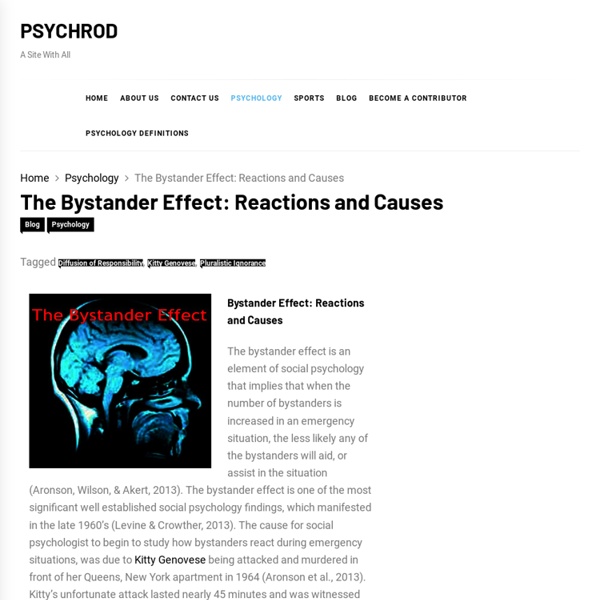Understanding the Bystander Effect
If you witnessed an emergency happening right before your eyes, you would certainly take some sort of action to help the person in trouble, right? While we might all like to believe that this is true, psychologists suggest that whether or not you intervene might depend upon the number of other witnesses present. What Is the Bystander Effect? The term bystander effect refers to the phenomenon in which the greater the number of people present, the less likely people are to help a person in distress. When an emergency situation occurs, observers are more likely to take action if there are few or no other witnesses. Being part of a large crowd makes it so no single person has to take responsibility for an action (or inaction).
Diffusion of Responsibility: Definition and Examples in Psychology
What causes people to intervene and help others? Psychologists have found that people are sometimes less likely to help out when there are others present, a phenomenon known as the bystander effect. One reason the bystander effect occurs is due to diffusion of responsibility: when others are around who could also help, people may feel less responsible for helping. Key Takeaways: Diffusion of Responsibility Diffusion of responsibility occurs when people feel less responsibility for taking action in a given situation, because there are other people who could also be responsible for taking action.In a famous study on diffusion of responsibility, people were less likely to help someone having a seizure when they believed there were others present who also could have helped.Diffusion of responsibility is especially likely to happen in relatively ambiguous situations.
The Bystander Effect in Emergency Situations
Mental Health The Bystander Effect in Emergency Situations By Karen Doll, Psy.D., L.P March 18, 2019
The Bystander Effect: How to React If You See Someone Being Harassed
Sherrif Karamat, CAE, is President and Chief Executive Officer of PCMA. Karamat also serves as President of the PCMA Foundation and Publisher of Convene magazine. As CEO, Karamat leads the vision, mission and promise for PCMA’s global family of brands. Karamat serves the greater business events industry as a prominent business architect, enabling our community to become a catalyst for economic and social progress, organizational success, and personal and professional development.
Bystander Effect: What Is It and What You Can Do About It
What the bystander effect looks like A little after 3 a.m. on March 13, 1964, Catherine “Kitty” Genovese parked her car and walked to her apartment in Queens, New York, after finishing her shift as a bar manager. Serial killer Winston Moseley was out to victimize someone that night. Genovese became his target.
A New Look at the Killing of Kitty Genovese: The Science of False Confessions
On March 13, 1964 a woman named Catherine “Kitty” Genovese was murdered outside of her apartment in Queens, New York. Over the course of a brutal attack lasting over 30 minutes, Genovese was stabbed at least 14 times. It was widely reported that despite Genovese’s screams for help, not a single one of the 38 bystanders at the apartment that night came to her aid.
Bystander Intervention
Darley and Latane, the forefathers of bystander intervention, identified five stages that people move through when taking action in a problematic situation. These stages may not be linear.1 STAGE ONENotice potentially problematic situations.
From Empathy to Apathy: The Bystander Effect Revisited - Ruud Hortensius, Beatrice de Gelder, 2018
When people are asked whether they would spontaneously assist a person in an emergency situation, almost everyone will reply positively. Although we all imagine ourselves heroes, the fact is that many people refrain from helping in real life, especially when we are aware that other people are present at the scene. In the late 1960s, John M. Darley and Bibb Latané (1968) initiated an extensive research program on this so-called “bystander effect.” In their seminal article, they found that any person who was the sole bystander helped, but only 62% of the participants intervened when they were part of a larger group of five bystanders. Following these first findings, many researchers consistently observed a reduction in helping behavior in the presence of others (Fischer et al., 2011; Latané & Nida, 1981).



